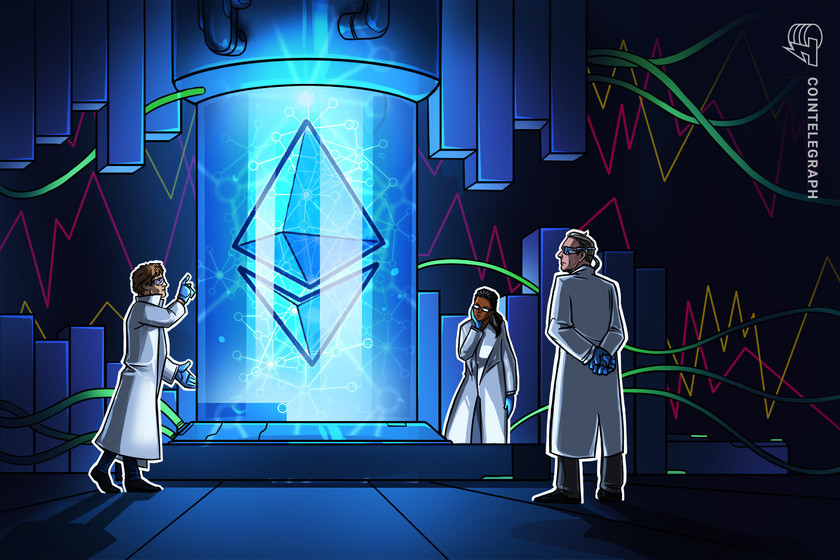Latest news about Bitcoin and all cryptocurrencies. Your daily crypto news habit.
An assortment of on-chain and derivatives data signal that ETH price is unlikely to rally above $3,500 any time soon.
Analyzing Ether's (ETH) current price chart paints a bearish picture, which is largely justified by the 11% drop over the past month, but other traditional finance assets faced more extreme price corrections in the same period. The Invesco China Technology ETF (CQQ) is down 31% and the Russell 2000 declined by 8%.

Ether price at FTX, in USD. Source: TradingView
Currently, traders fear that losing the descending channel support at $2,850 could lead to a stronger price downturn, but this largely depends on how derivatives traders are positioned along with the Ethereum network's on-chain metrics.
According to Defi Llama, the Ethereum network's total value locked (TVL) flattened in the last 30 days at 27 million Ether. TVL measures the number of coins deposited on smart contracts, including decentralized finance (DeFi), nonfungible token (NFT) marketplaces, gaming and high-risk applications.
The Ethereum network's average transaction fee increased to $13 after bottoming at $11.50 on April 20 but one should analyze whether this reflects decreased use of decentralized applications (DApps) or merely if it is users benefiting from layer-2 scaling solutions.
Ether's futures premium tilts toward bears
Traders use Ether futures market data to understand how professional traders are positioned, but unlike the standard perpetual futures, the quarterly contracts are whales and market makers' preferred instruments because they can avoid the fluctuating funding rate.
The basis indicator measures the difference between longer-term futures contracts and the current spot market levels. In neutral markets, the Ether futures annualized premium should run between 5% to 12% to compensate traders for "locking in" the money until the contract expiry.

Ether 3-month futures annualized premium. Source: Laevitas.ch
The current 2% Ether futures basis clearly shows the lack of demand for leverage buyers. Although not precisely a backwardation (negative premium), an annualized futures premium below 5% is usually deemed bearish.
This data tells us that pro traders have been neutral-to-bearish in the past couple of months but to exclude externalities that might have influenced derivatives data, one should analyze the Ethereum network on-chain data. For example, monitoring the network use tells us whether actual use cases support the demand for Ether.
On-chain metrics are sluggish
Measuring the number of active addresses on the network provides a quick and reliable indicator of effective use. Of course, this metric could be misguided by the increasing adoption of layer-2 solutions, but it works as a starting point.

7-day average of active addresses on Ethereum. Source: CoinMetrics
The current 584,477 daily active addresses average is a 4% decrease from 30 days ago and nowhere near the 675,117 seen in November 2021. Thus, data shows that Ether token transactions are not showing signs of growth, at least on the primary layer.
Traders should rely on DApp usage indicators, but avoid exclusive focus on the TVL because that metric is heavily concentrated on DeFi applications. Gauging the number of active addresses provides a broader view.

Ethereum network 30-day DApps activity. Source: DappRadar
Ethereum DApps active addresses have flatlined over the past 30 days. Overall, the data is slightly disappointing, considering competing chains such as Solana (SOL) saw a 34% active addresses increase.
Unless there’s decent growth in Ether transactions and DApp usage, the $2,850 descending support channel resistance might not hold, triggering a deeper short-term price correction.
The views and opinions expressed here are solely those of the author and do not necessarily reflect the views of Cointelegraph. Every investment and trading move involves risk. You should conduct your own research when making a decision.
Disclaimer
The views and opinions expressed in this article are solely those of the authors and do not reflect the views of Bitcoin Insider. Every investment and trading move involves risk - this is especially true for cryptocurrencies given their volatility. We strongly advise our readers to conduct their own research when making a decision.
